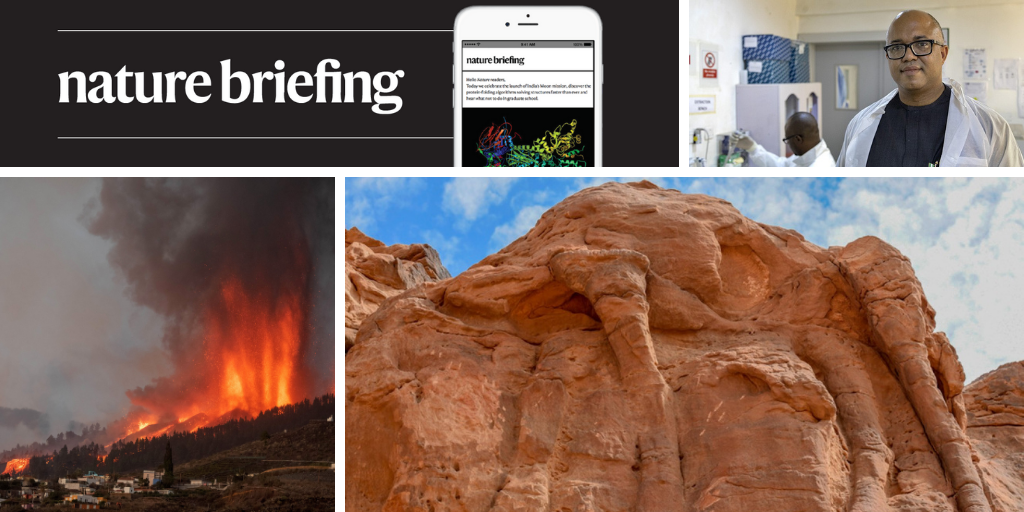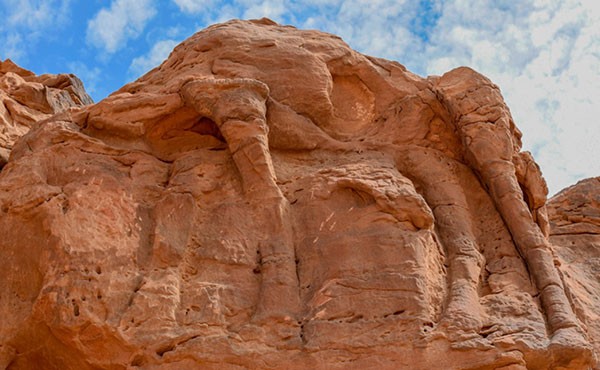Hello Nature readers, would you like to get this Briefing in your inbox free every day? Sign up here.
Stunning reliefs of camels in a rock formation in Saudi Arabia are far older than was first thought: they were carved more than 7,000 years ago, when the climate of Arabian Peninsula was markedly cooler and wetter than it is today. The revised estimate means that the camels are probably the world’s oldest surviving large-scale animal reliefs. Ancient builders seem to have restored the reliefs time and again as the animal features eroded, and the monuments might have retained their form and function for millennia.
BBC | 3 min read & Nature Research Highlight | 2 min read (Nature paywall)
Reference: Journal of Archaeological Science: Reports paper
The leader of the nascent Nigeria Centre for Disease Control (NCDC), epidemiologist Chikwe Ihekweazu, will head the World Health Organization (WHO)’s new Hub for Pandemic and Epidemic Intelligence in Berlin. Only the WHO could have tempted him away from his beloved country, says Ihekweazu, but people should remember that the organization can only do so much. “The WHO can provide better data, and better analytics and advice for political leaders, but ultimately it is up to them to make good decisions,” says Ihekweazu. “We all have to work together to deliver the future we want.”
Features & opinion
For decades, the most influential population projection has been produced by a small group of modellers at the United Nations, which forecasts that nearly 11 billion people will be living on Earth by the end of the century. Rival groups say the population will peak earlier and at a much lower level. At issue are complex influences on fertility, and the thorny question, in a year when many censuses were delayed by the pandemic, of how many people are alive right now.
Hurricane Ida showed us how inequalities overlap and amplify each other, argues Catherine Coleman Flowers, co-chair of the first-ever White House Environmental Justice Advisory Council. She considers a region of Louisiana, overburdened with petrochemical plants, that is known as Cancer Alley. There, people who already have the country’s highest cancer and COVID-19 rates now worry about losing their homes to storms made worse by climate change. “Fighting such inequalities does not fall neatly under causes such as climate justice, social justice or environmental justice,” she writes, coining the term ‘planetary justice’. “I am heartened by US President Joe Biden’s efforts to incorporate such thinking into policy.”
The US government announced earlier this month a sweeping plan that mandates COVID-19 vaccines for federal workers, members of the armed forces, many health workers and employees of larger businesses. Scrutinizing such an ambitious scheme will be tricky: the rules affect millions of people in a country with a fractured system for sharing health data. Physician Tom Frieden, the former head of the US Centers for Disease Control and Prevention, outlines how to make a vaccine verification system that is accurate, secure and fair.
The New York Times | 5 min read (porous paywall)
An ambitious experiment in Oregon’s Malheur National Forest aims to reduce wildfire risk — and to reach a consensus on management between conservationists and loggers. Researchers intensively monitor hundreds of 1,000-square-metre plots, testing the effects of thinning and controlled burning. Recent fires suggest that these methods are working by sacrificing some trees to prevent the immolation of all of them.








More News
PGE2 inhibits TIL expansion by disrupting IL-2 signalling and mitochondrial function – Nature
Phylogenomics and the rise of the angiosperms – Nature
Network of large pedigrees reveals social practices of Avar communities – Nature